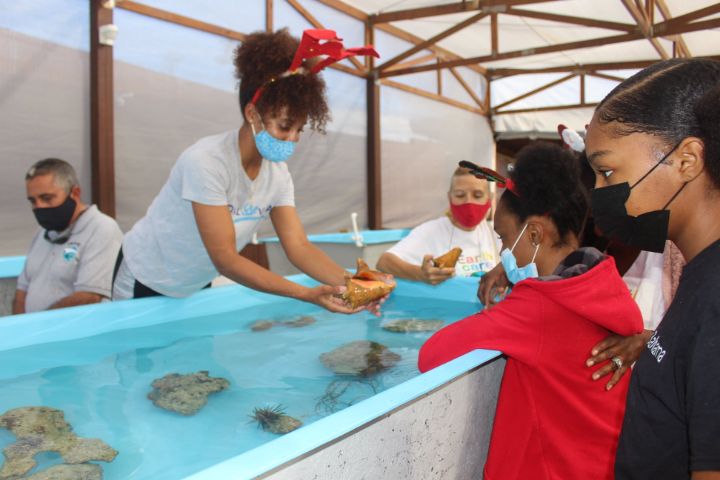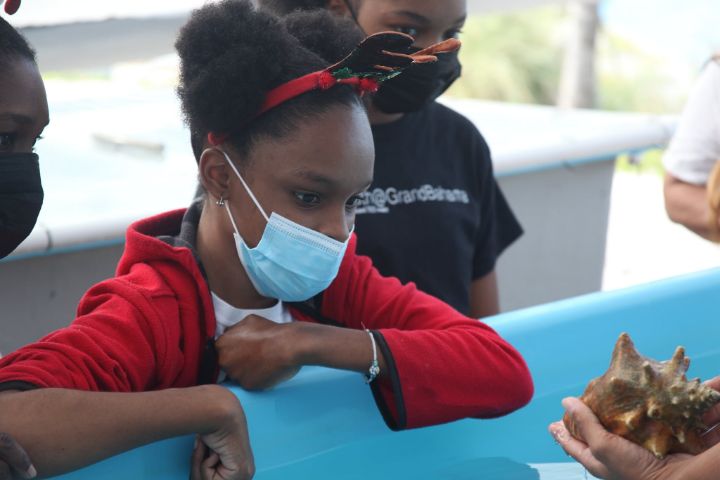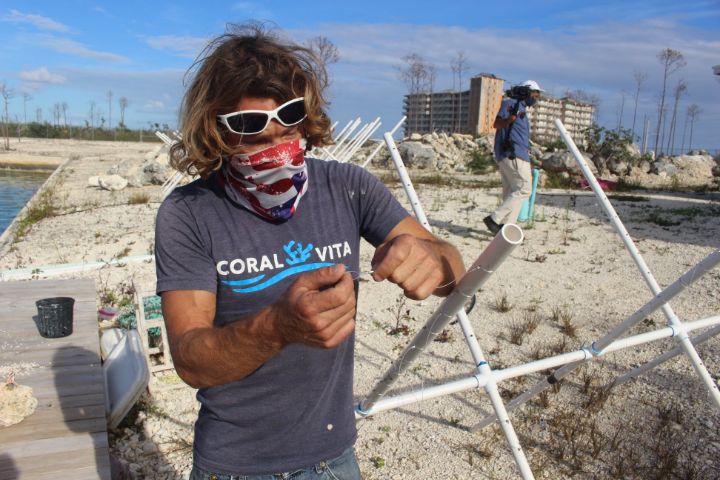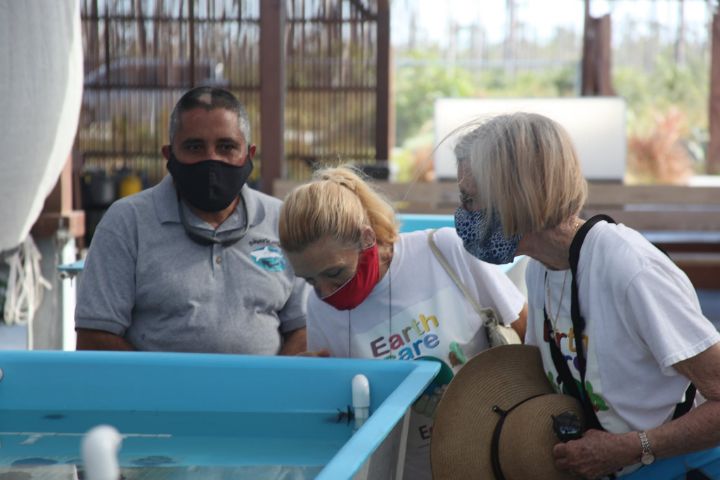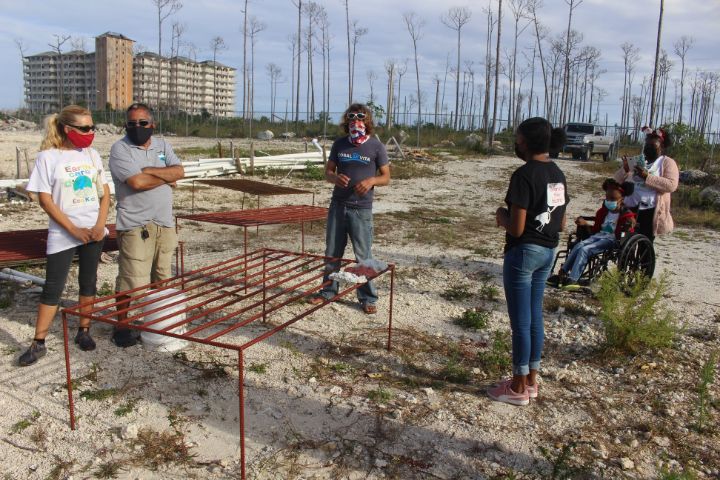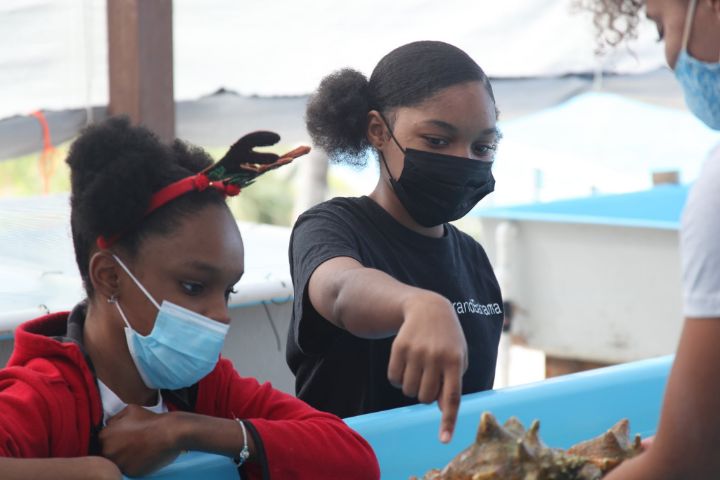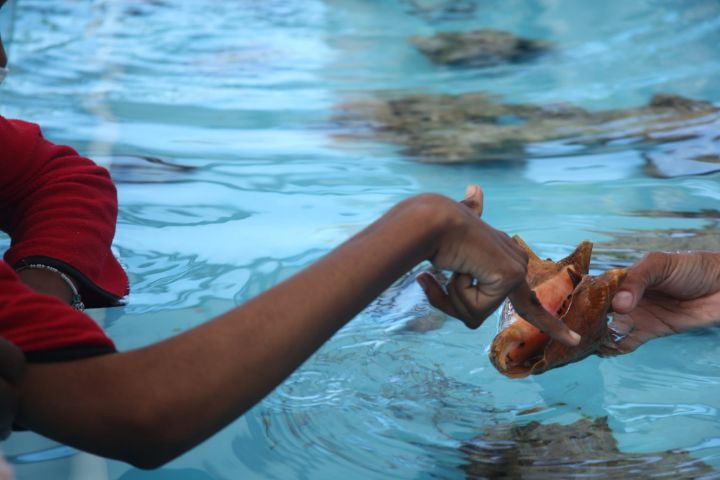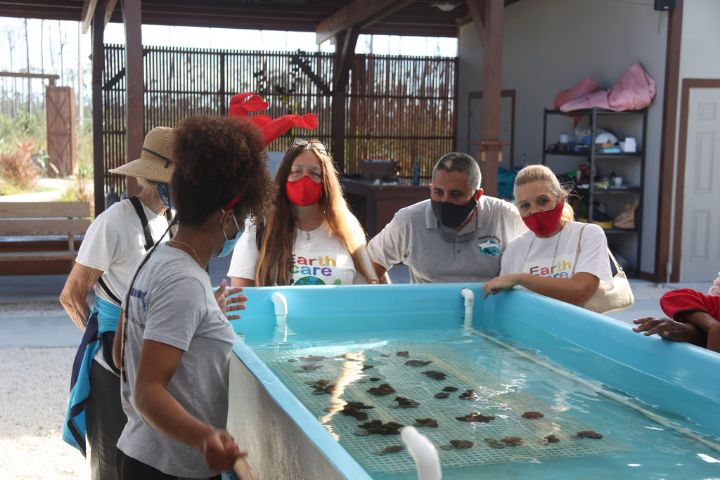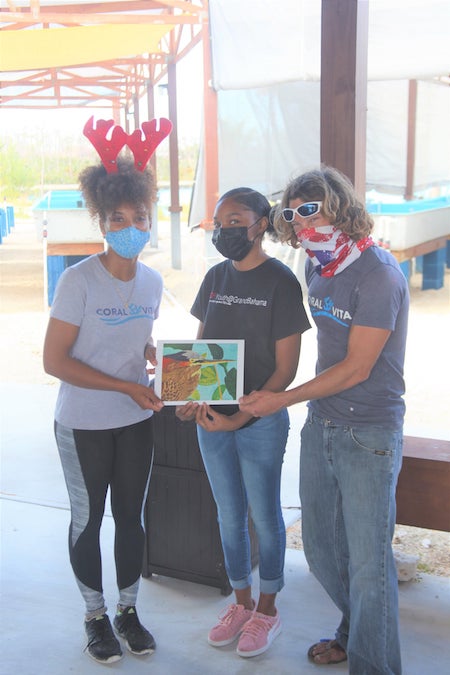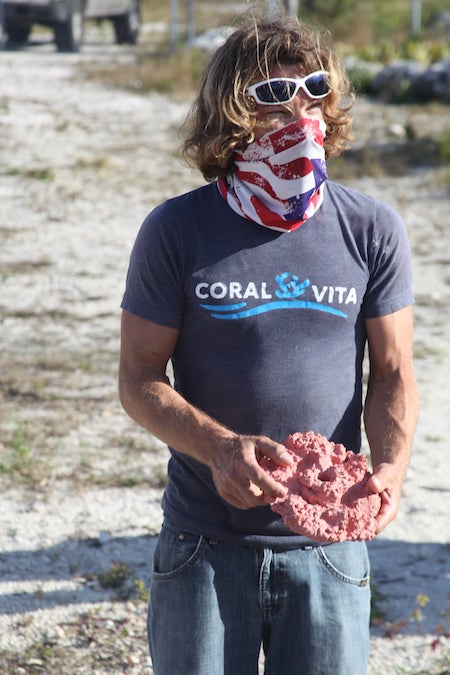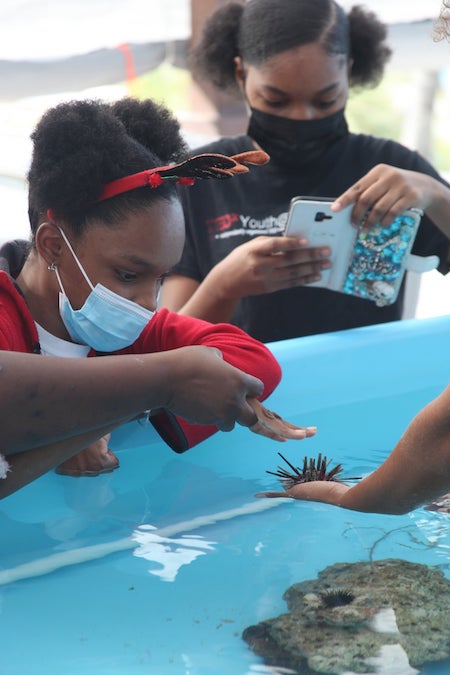|
From:TheBahamasWeekly.com Community
Grand Bahama Island - After working on Our Garden, Community Garden on Saturday, December 12th 2020, EARTHCARE Eco Kids and EARTHCARE Volunteers toured the world’s first land-based commercial coral farm, Coral Vita. Our eager group went to Coral Vita where they met Coral Vita Director of Restoration Operations, Joe Oliver, and Alannah Vellacott, Coral Restoration Specialist who gave a very informative tour of the active Coral Vita facility. First, Mr. Oliver explained how the farm came to be. Next Alannah Vellacott explained the biology of corals and the various methods used to grow different corals to bring dying reefs back to life. 80% of coral reefs are dead in The Bahamas, half of global reefs are dead, and over 90% of what remain are projected to die by 2050.
Coral Vita is restoring the world’s dying reefs and also growing them to be more resilient to the effects of climate change. With climate change comes extreme temperatures, both lower and higher temperatures that coral reefs just aren’t used to. There are also threats to reefs such as pollution and hurricanes which also make the coral vulnerable to other threats such as disease. Coral reefs are not just beautiful ecosystems but critically important for places like The Bahamas by powering tourism economies, providing habitat for fisheries, and acting as seawalls by reducing wave energy during storms. Coral bleaching is a phenomenon that happens when corals are stressed out for an extended period of time. Corals require very strict conditions to grow. The coral will release the symbionts, the microalgae that live within its tissue when stressed and this will turn the coral white which is why it is called coral bleaching.
Alannah explained the ways that coral can reproduce and the three methods of coral propagation. Corals can release eggs and sperm into the water column. The embryos turn into planula larvae which eventually settle onto the bottom and continue to metamorphose into coral. Fragmentation is another process. Pieces of coral break off for various reasons such as turbulence from storms or being knocked by swimmers or anchors. If the pieces land on a suitable substrate they will start to grow. If they fall into sand or rubble then chances are that they may not survive. Fragments of coral are collected from the substrates where they would not do well and are grown in ideal conditions in the tanks at Coral Vita. Micro-fragmentation grows smaller bits of coral, accelerating grow rates up to 50x faster. Coral trees are another method of propagating corals. Alannah Vellacott then showed the group the tanks with the growing corals and the touch tank with conchs, sea urchins and more.
Joe Oliver then took the group to the dock area where he explained the saltwater life support system. Most of Coral Vita’s operations are focused on land-based coral aquaculture, but they are implementing more ocean-based nurseries as they upgrade their systems following Hurricane Dorian. “You can see the nursery coral trees and mooring blocks that we use to anchor the nursery trees which hold 100 corals per individual tree. We have a little over 1500 corals in Ocean Bay’s nursery out in front of Banana Bay. As they get too big on the tree, we cut them up and fragment them again. Since they are growing well, we know that they will be good candidates for out-planting and replanting later on. We will take all of those pieces and in the next 6 months to a year we start planting out our micro-frags that we have been growing at our farm as well and will also have bigger pieces to go with them. The research has shown over time that the corals do better the more different stages that you can plant out together, the more maturity you have, the more variety, the better off the whole project does in the long run. We are looking at combining the best strategies for the most efficient coral restoration over time.”
Joe continued, “Our goal for the next year is to have between 5,500 and 8,000 fragments growing in the ocean as well as on tree nurseries like these and on the table nurseries. One of our other options that we use with ocean-based operations is our nursery tables. They are a modified version of what gets used in Indonesia and the Philippines for coral farming. Our staff have made these plates that allow us to take fragments that have broken off in the reef, micro-fragments or we can take pieces that we have fragmented, we can epoxy or super glue them to these. We let them set or a day or two, then we can put them on one of these tables that will be in the shallows. The idea is that we want to be able to bring corals and pieces of coral from the reef to the farm here, grow them under the best conditions possible, grow as many little pieces as we can over time. We also have to reacclimate them to the ocean now and to the future ocean. Once the corals that were growing on the trees in the deeper ocean have been moved to a shallower area and been monitored for a month, then they can be glued to the substrate in the out-planting exercise.”
EARTHCARE Eco Kid, Rachelle Newbold presented Mr. Oliver and Ms. Vellacott with a print of a Green Heron painting by Gail Woon, EARTHCARE Founder as a token of EARTHCARE’s appreciation for giving us the valuable educational tour. Patrizia Palmarini, EARTHCARE Volunteer added, “I enjoyed it! The presentation was clear, concise and informative. The topics are obviously very relevant and important. Thank you.” Copyright EARTHCARE 2021
|
